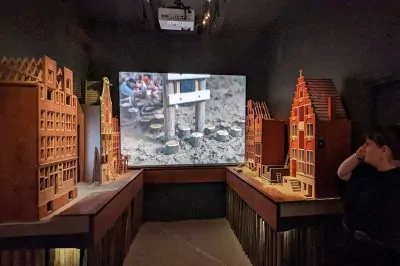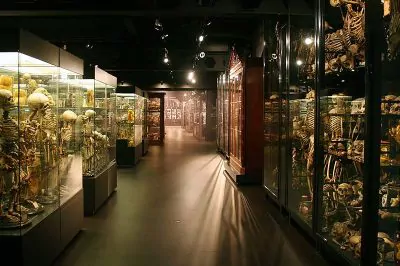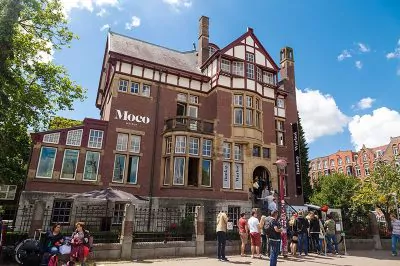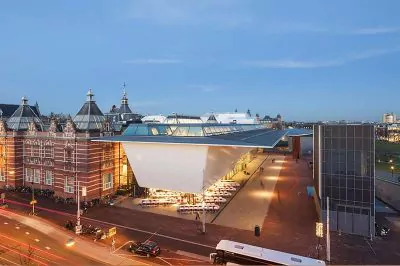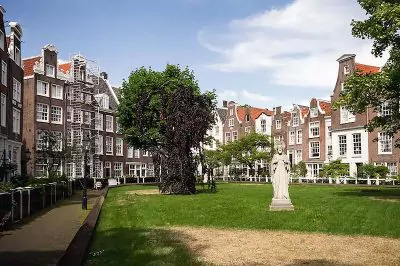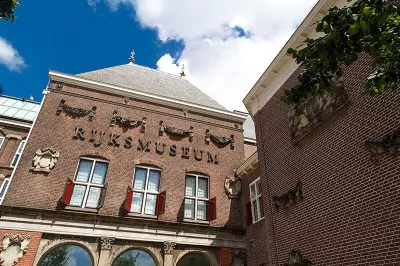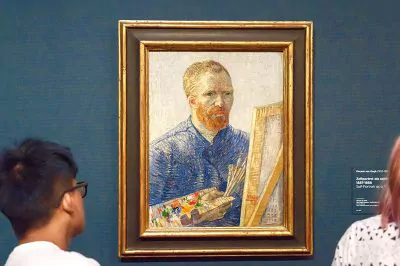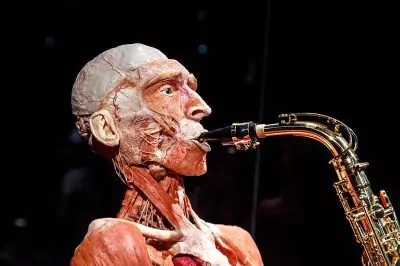Micropia: The Micro Museum That Will Change How You See Everyday Things
We cannot see them, but they are always with us. In our hands, on our tongues, inside us, billions of them. They are always with you when we breathe, kiss or eat something. Regardless of their size, they shape our lives and make us sick or well. Microbes…
Micropia is housed in a historic building. An extension of the Artis Zoo, Micropia is dedicated to the study of tiny creatures that can only be seen through microscopes. The main purpose of Micropia is to make microbes invisible to the naked eye visible and to inform visitors about these microbes. Micropia Museum is a museum like no other I have come across before. After visiting the museum, you get detailed information about the place of bacteria and microorganisms in our daily lives.
You can see many microorganisms live in the museum. Yeast used for making wine, beer and bread, a virus that can reproduce by invading other cells, staphylococcus that looks like a grape, streptococcus that reproduces in chains, animals known as wheeled animals (rotifera) because of the wheel-like appearance on their heads, propionibacterium, a bacterium that plays a supporting role in acne formation and reproduces excessively when the pores on the skin are clogged.
It is possible to see many organisms such as the coli bacillus that lives in the large intestines of mammals, the chloroplast where photosynthesis takes place and produces nutrients and oxygen in plants, Caenorhabditis elegans, which resembles earthworms, and witness their movements, steps and lifestyles. It is almost like a zoo for microbes.
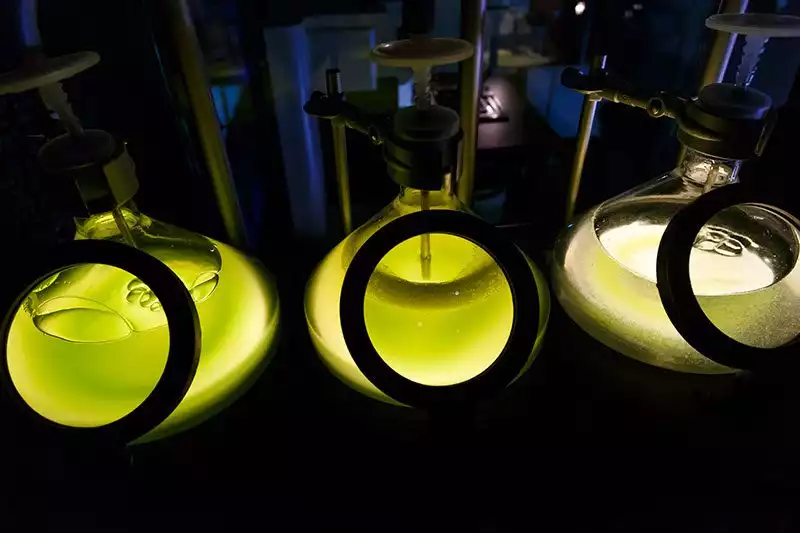
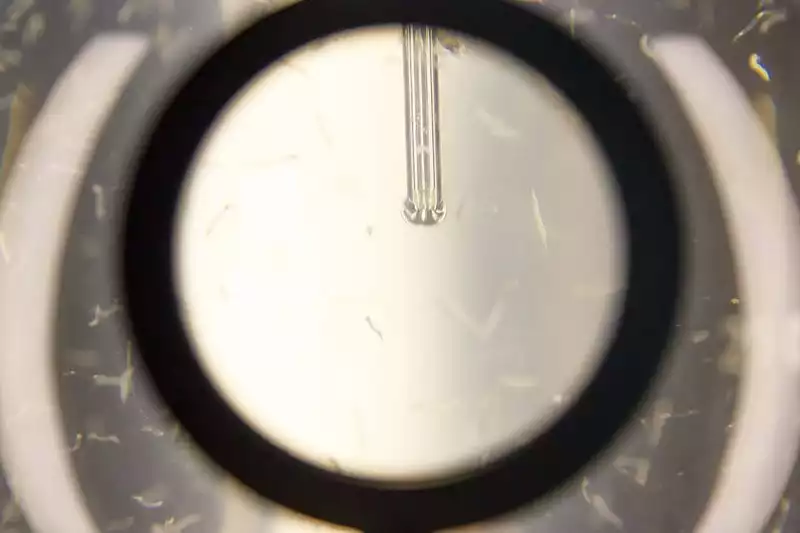
The most interesting bacterium of the museum is a water bear called Tardigrada, which means slow-stepping. This strange animal with 4 pairs of short legs can live in airless environments because it does not breathe. In 2007, a number of Tardigrada were sent into space and when they were returned after 10 days, they were still alive. This means that they can live even in very cold temperatures and high levels of cosmic and UV radiation.
This animal, which has the ability to live in much more difficult conditions than other life forms, can live for 30 years without food and drink. Tardigrada, which can live in humid environments, tends to dry out in environments with low humidity. When faced with such a situation, it puts itself into hibernation mode and even a few drops of water are enough to bring it back to life.
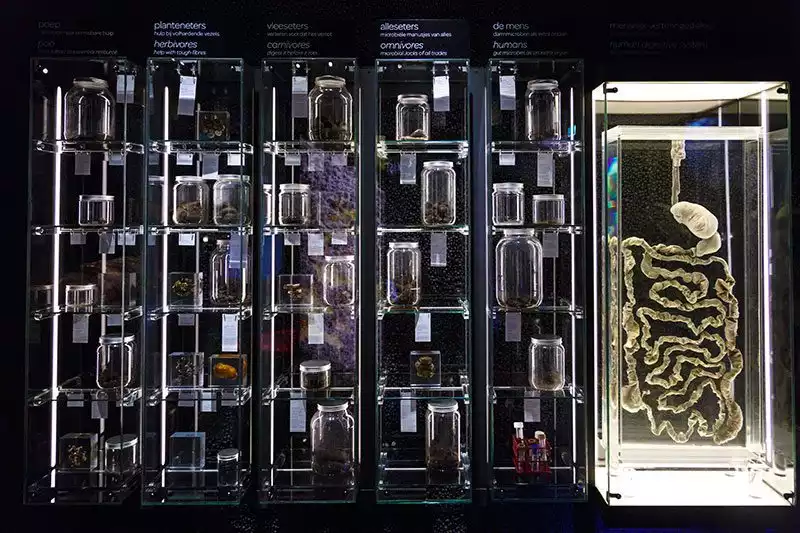
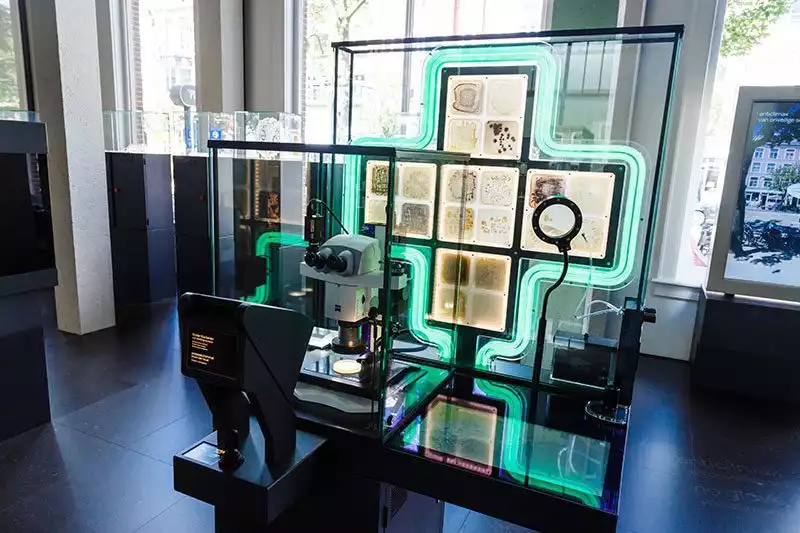
As you walk through the museum, you see a baby giraffe on display in a glass case that has already died. The baby giraffe died of natural causes shortly after it was born at Artis Zoo in 2014. To demonstrate the role of microbes as part of the life cycle, the giraffe’s body was placed in a room with special conditions, where it was broken down in a controlled manner by many different microbes. As a result, electromagnetic rays called gamma radiation, which stops the disintegration process, were used to destroy the DNA of the microbes. The result of this microbial destruction can be seen in Mikropia.
The museum says that most of the microbes in the mouth are there to maintain oral health. The museum also talks about the transfer of microbes during kissing. One of the booths in the center of the museum has an area for couples and an app called Kiss o meter interactively shows visitors how many germs are transferred to the opposite sex after the couple kisses.
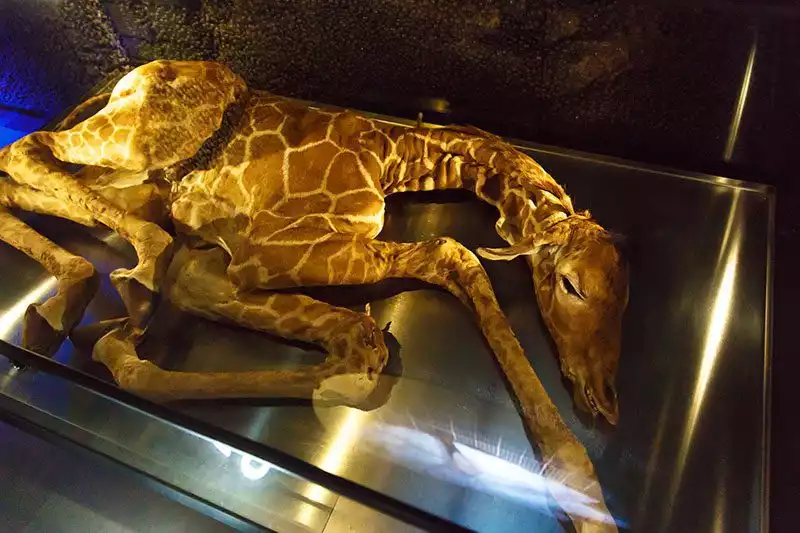

Micropia Museum is not only a museum where you can study microorganisms such as bacteria, but also a place where you can closely observe the lives of ants and how they work in colonies. On the platform prepared for the ants, you can see how they use rotting fruit. There are always a few guards in charge of the ants and they send the escaped ants back to their platform. It is advisable not to get too close as the ants can bite people.
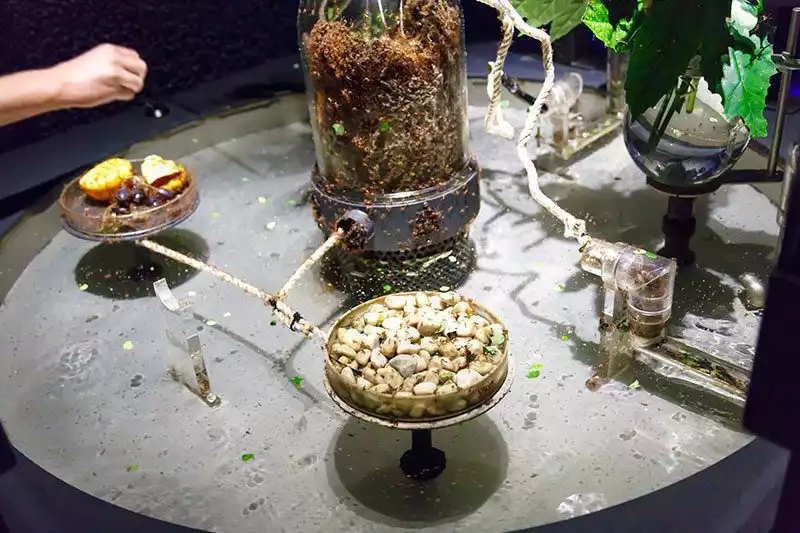
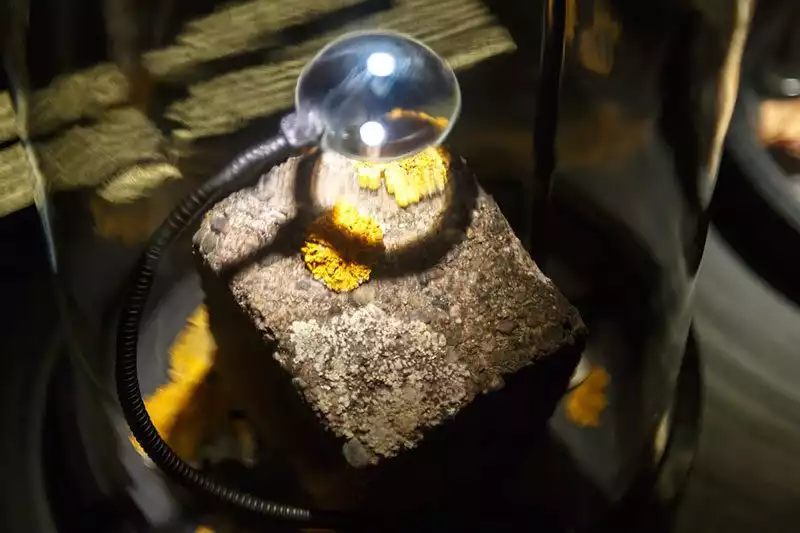
You can make different observations throughout the museum. One of them is the highly magnified versions of the objects we use in our daily lives. The enlarged versions are at a level to show the organisms on them that cannot be seen with the naked eye. We had the chance to see organisms on many materials from dish sponges to toothbrushes, earwax to toilet brushes. Seeing the objects we use in normal life so closely is another dimension and very impressive.
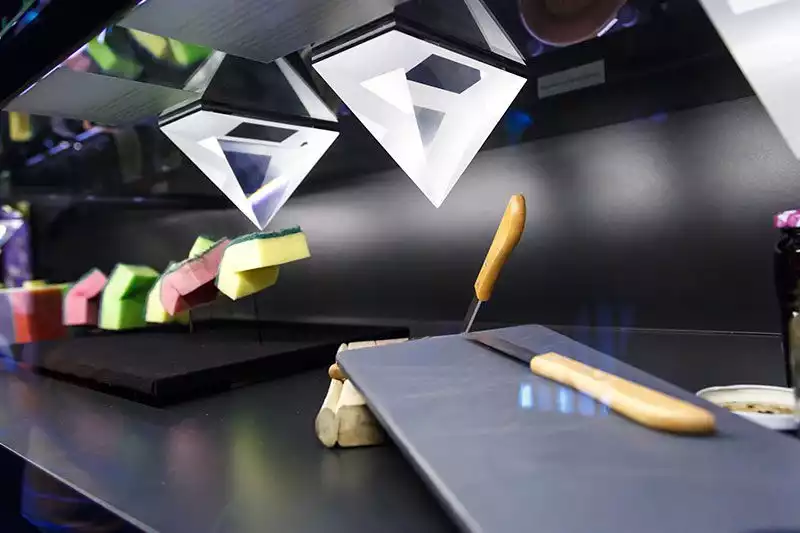
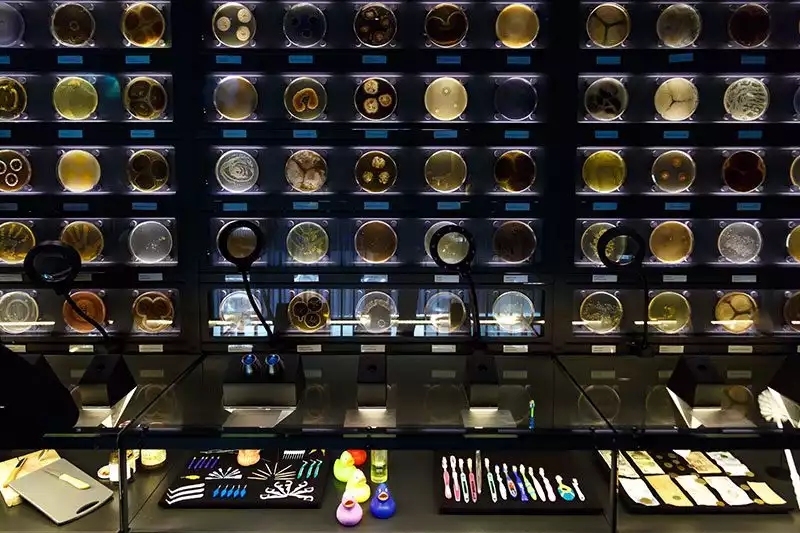
When you enter the museum, they give you a round card. While visiting the museum, you place these cards next to each stand and stamp the ones that impress you among the microbes you examine. At the end of the museum, you have the chance to scan the microbes you stamped and watch them on the big screen like a documentary. Moreover, if you have any questions about microbes, you can ask your questions to the technicians in the laboratory between 13:00-16:00 every day.
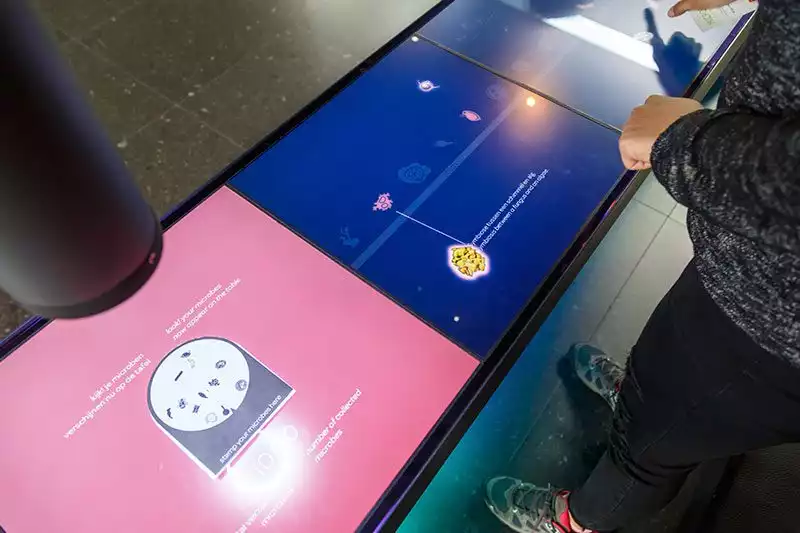
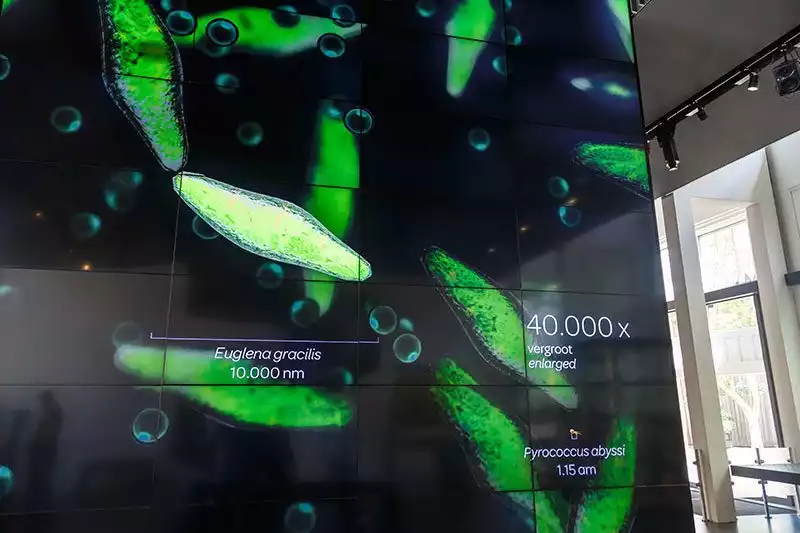
What are Micropia entrance fee and visiting hours?
Micropia is free if you have an Amsterdam City Card. If you don’t have an Amsterdam card and you also want to visit Artis Zoo, you can enter both at a lower price with a combined ticket.
